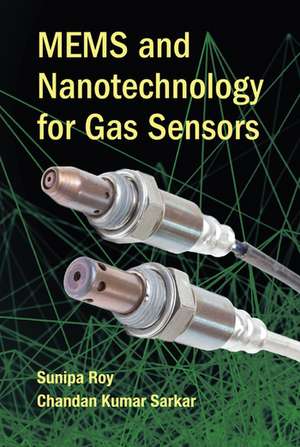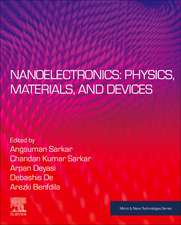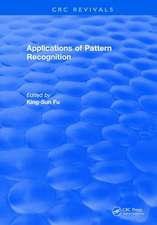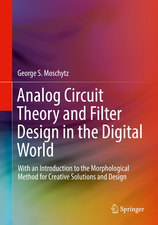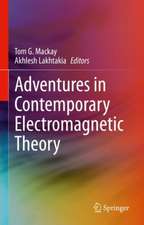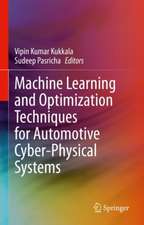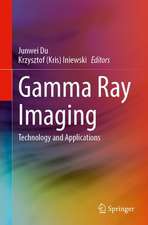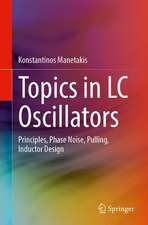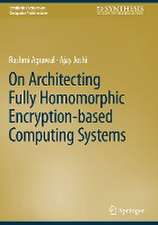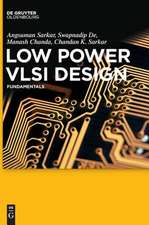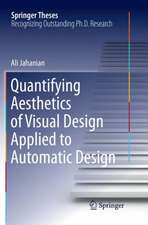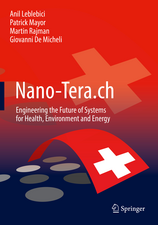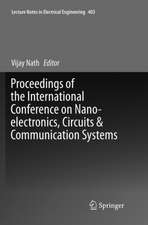MEMS and Nanotechnology for Gas Sensors
Autor Sunipa Roy, Chandan Kumar Sarkaren Limba Engleză Paperback – 30 iun 2020
There is a growing demand for low-power, high-density gas sensor arrays that can overcome problems relative to high power consumption. Low power consumption is a prerequisite for any type of sensor system to operate at optimum efficiency. Focused on fabrication-friendly microelectromechanical systems (MEMS) and other areas of sensor technology, MEMS and Nanotechnology for Gas Sensors explores the distinct advantages of using MEMS in low power consumption, and provides extensive coverage of the MEMS/nanotechnology platform for gas sensor applications.
This book outlines the microfabrication technology needed to fabricate a gas sensor on a MEMS platform. It discusses semiconductors, graphene, nanocrystalline ZnO-based microfabricated sensors, and nanostructures for volatile organic compounds. It also includes performance parameters for the state of the art of sensors, and the applications of MEMS and nanotechnology in different areas relevant to the sensor domain.
In addition, the book includes:
- An introduction to MEMS for MEMS materials, and a historical background of MEMS
- A concept for cleanroom technology
- The substrate materials used for MEMS
- Two types of deposition techniques, including chemical vapour deposition (CVD)
- The properties and types of photoresists, and the photolithographic processes
- Different micromachining techniques for the gas sensor platform, and bulk and surface micromachining
- The design issues of a microheater for MEMS-based sensors
- The synthesis technique of a nanocrystalline metal oxide layer
- A detailed review about graphene; its different deposition techniques; and its important electronic, electrical, and mechanical properties with its application as a gas sensor
- Low-cost, low-temperature synthesis techniques
- An explanation of volatile organic compound (VOC) detection and how relative humidity affects the sensing parameters
MEMS and Nanotechnology for Gas Sensors provides a broad overview of current, emerging, and possible future MEMS applications. MEMS technology can be applied in the automotive, consumer, industrial, and biotechnology domains.
Preț: 432.87 lei
Nou
Puncte Express: 649
Preț estimativ în valută:
82.86€ • 90.03$ • 69.64£
82.86€ • 90.03$ • 69.64£
Carte tipărită la comandă
Livrare economică 21 aprilie-05 mai
Preluare comenzi: 021 569.72.76
Specificații
ISBN-13: 9780367575526
ISBN-10: 0367575523
Pagini: 242
Dimensiuni: 156 x 234 x 15 mm
Greutate: 0.38 kg
Ediția:1
Editura: CRC Press
Colecția CRC Press
ISBN-10: 0367575523
Pagini: 242
Dimensiuni: 156 x 234 x 15 mm
Greutate: 0.38 kg
Ediția:1
Editura: CRC Press
Colecția CRC Press
Cuprins
Section I: Fabrication Procedure. Introduction. Substrate for MEMS. Deposition. Photolithography: Pattern Transfer. Structuring MEMS: Micromachining. Microheaters for Gas Sensor. Section II: Sensor Applications. Sensing with Graphene. Nanocrystalline ZnO-Based Microfabricated Chemical Sensor. Nanostructures for Volatile Organic Compound Detection. Sensor Interfaces. MEMS- and Nanotechnology-Enabled Sensor Applications.
Notă biografică
Sunipa Roy is assistant professor of electronics and telecommunications engineering at Guru Nanak Institute of Technology, Calcutta, India. She received her M.Tech in VLSI and microelectronics from West Bengal University of Technology in 2009, and her Ph.D in engineering from Jadavpur University in 2014. She has served as a fellow of the Council of Scientific and Industrial Research (India), is a member of the Institution of Engineers (India), and a member of the IEEE. She has also presented numerous papers in journals and conferences. Her research interests include MEMS, nanotechnology, and graphene and its application as a gas sensor.
Chandan Kumar Sarkar is professor of electronics and telecommunications engineering at Jadavpur University, Calcutta, India. He received his B.Sc (Hons) and M.Sc in physics from Aligarh Muslim University, India in 1975, earned his Ph.D from Calcutta University in 1979, and his D.Phil from the University of Oxford, UK in 1984. In 1980, Dr. Sarkar received the British Royal Commission Fellowship to work at the University of Oxford. He worked as a visiting scientist at the Max Planck Laboratory in Stuttgart, Germany, and at Linkoping University in Sweden. He also taught in the Department of Physics at the University of Oxford.
Chandan Kumar Sarkar is professor of electronics and telecommunications engineering at Jadavpur University, Calcutta, India. He received his B.Sc (Hons) and M.Sc in physics from Aligarh Muslim University, India in 1975, earned his Ph.D from Calcutta University in 1979, and his D.Phil from the University of Oxford, UK in 1984. In 1980, Dr. Sarkar received the British Royal Commission Fellowship to work at the University of Oxford. He worked as a visiting scientist at the Max Planck Laboratory in Stuttgart, Germany, and at Linkoping University in Sweden. He also taught in the Department of Physics at the University of Oxford.
Recenzii
"…this book is an outstanding, broad overview of basics, concepts, specific materials used for each sensing application, and techniques employed in current, emerging, and possible future MEMS applications. I strongly recommend this book to all research students interested in MEMS and gas sensors."
—MRS Bulletin, December 2016
—MRS Bulletin, December 2016
Descriere
Solid-state gas sensors based on semiconducting sensing materials represent a viable solution for an increasing number of applications, ranging from health care and safety to quality control in industrial processes. Enhancing the sensitivity of the sensor requires an elevated temperature with uniform temperature distribution throughout the sensi
